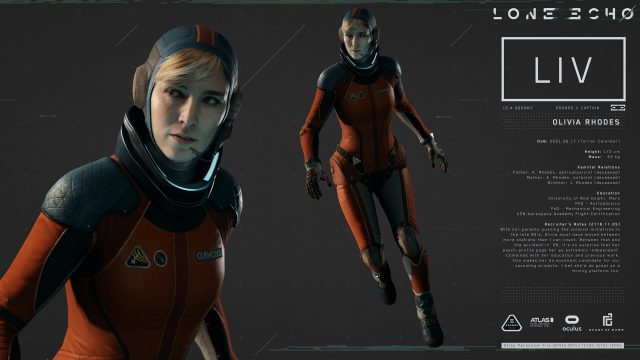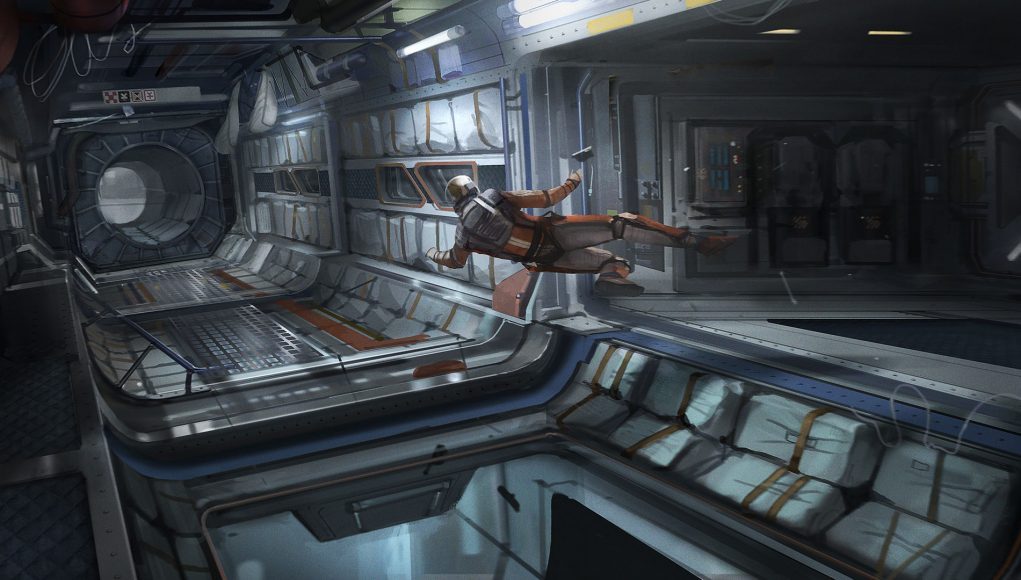Believable Characters

Lone Echo places the player in close proximity to Olivia, the sole human on board the space station and someone the player works closely with throughout the game. When the game begins it is evident that they have a long standing working relationship and a casual familiarity. The game gambles somewhat on the believability of Olivia by not shying away from close interactions. Moving around the cramped confines of the spaceship there is a feeling of a shared space, of two people working in tandem, though ironically the player inhabits a robotic body and takes the role of an artificial intelligence.

We asked Weerasuriya whether this reliance on Olivia feeling like a real person evolved through development, or was there from the start. He smiled at the question, and confirms “That was very early on, for the simple reason that we start games with certain pillars that we want to tackle. That was one of those pillars: can you make an artificial presence feel real, and can you make a player care about it?”
Of course games have been chasing that ideal for a long time, many with some considerable success, Weerasuriya agreed.
“We’ve done that in games. There are brilliant writers all around games, I think of Neil,” he said, referring to Neil Druckmann of developer Naughty Dog, “and the work he’s done on The Last of Us… and yes, we’ve started to care. We have those emotions running through our heads and hearts when we play those games.”
So what’s different about chasing the same goal in VR? It’s complicated, but after a moment’s thought Weerasuriya offers: “The question is, when we cross the boundary to immersion, can we build a character that now people are going to be able to scrutinise? It’s way more than just a camera looking at that character, seen through a TV. Now you’re gonna be able to just walk around that head and scrutinise. Can we make them feel something for that character?”

It’s an interesting problem as the Uncanny Valley is magnified tenfold when inside VR.
“That was very early on a challenge that we gave the animation team and the narrative team. So every one of our teams got their own challenges in VR. That, I think, is still in the infancy of what we can do in VR. What you see in Lone Echo is our first step, a baby step, into what we’re going to do.”
Ready At Dawn’s most recent PS4 title, The Order: 1886, was notable for some excellent character work in terms of the rendering and animation, but also the performances. It turns out that it wasn’t only the engine that came across from that game.
“We did carry something very clearly from The Order to Lone Echo,” he revealed, “and that’s Olivia herself. Olivia is actually the main character who played Isabelle in The Order: Alice Coulthard. When I started writing the project, even before the synopsis was done I called Alice and I said ‘We’re working on this project, I need you as the lead. Do you have the time, and would you like to be in the game as yourself?’ So we ended up scanning her, so the character that you see in the game is actually Alice, the real actress.”

This makes a lot of sense. If your mission is to create a believable AI-driven character in a game, you might start with an actual human being as a minimum.
“I wrote the character around her,” Weerasuriya said, “because I had known her for a few years, so it was very easy to say that I knew her mannerism and how she would deliver a lighthearted line, or how she would be a little more emotional in certain areas. So it was really cool to work with her.”
If Lone Echo’s human-driven representation of a game character is just the beginning, what’s the end game?
“All of us in the team have aspirations as to what a true AI character in VR could be like. I’m going to go in, and I’m going to talk… and I might be talking to a person like we’re talking now, and it might not be an actual person.” So that’s the end game: a face-to-face conversation with an AI that is some distance beyond passing the Turing Test. “A scary end game,” he adds.

